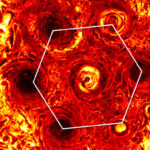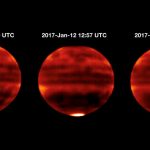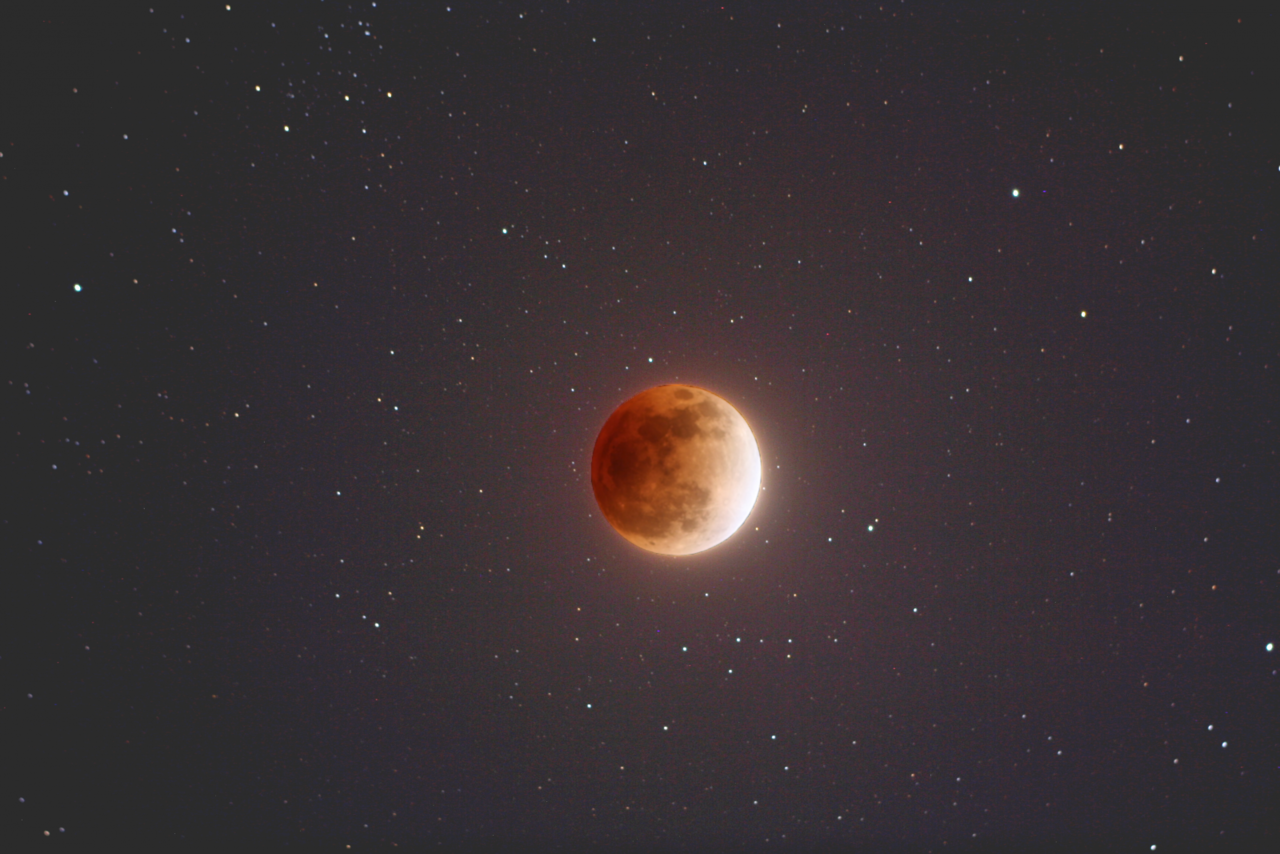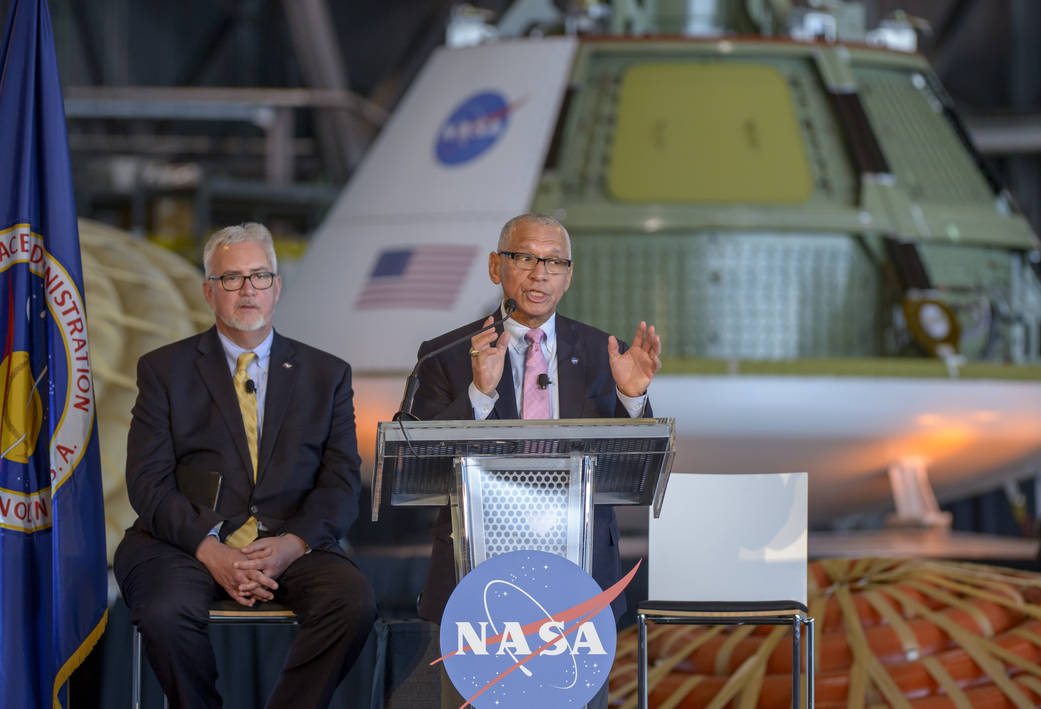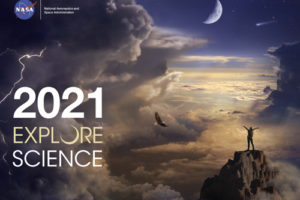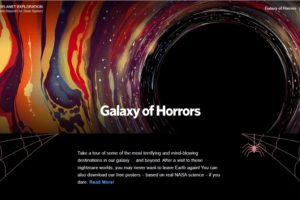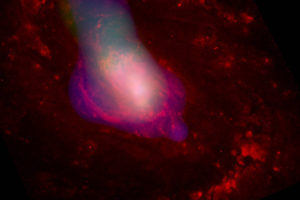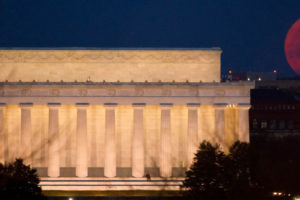日本のメディアで「ブラックホールの撮影に成功」という報道が流れました。
テレビ(NHKのニュースまで)や新聞などで「人類初の快挙」という文字が踊り、 国立天文台関係者の会見の模様などが報道されています。「ノーベル賞級の成果」とまで!
でも、一般の人からすると頭の中に「?」マークが浮かんでしまいます。
「あれ?ブラックホールって光さえも出てこれないんじゃなかったっけ?」
その通りです。
ブラックホールの画像というものは存在しません。
NASAの発表は以下の題名です。
「Black Hole Image Makes History; NASA Telescopes Coordinated Observations」
記事全文は以下に紹介しますが、正しく報道するなら次のような見出しになります。
「 ブラックホールの周囲の物質から放出される電波を、世界各地の8つの電波望遠鏡のデータから画像処理して公開 」
つまりNASAが世界各地の電波望遠鏡の連携を実現させ、観測データと不足部分は統計推定して可視化(画像にした)という発表です。複数の観測装置で大きな仮想観測装置に見立てる手法自体も普通のものです。「初」というのは「世界各地の電波望遠鏡を連携」という部分です。
日本の関係者が話を盛ってしまったのか、メディアがオーバーに報道したのか、なぜ虚偽報道のようになったかは不明です。NASAの活動に参画していることは良いことなのに、少し残念な報道になってしまいました。
ではNASAの記事をみてみましょう。
Black Hole Image Makes History; NASA Telescopes Coordinated Observations
A black hole and its shadow have been captured in an image for the first time, a historic feat by an international network of radio telescopes called the Event Horizon Telescope (EHT). EHT is an international collaboration whose support in the U.S. includes the National Science Foundation.
Event Horizon Telescope(EHT)と呼ばれる電波望遠鏡の国際ネットワークによる歴史的な功績によりブラックホールとその影が初めて画像に取り込まれました。EHTとは、アメリカ国立科学財団を含む米国支援による国際的なコラボレーションです。

Using the Event Horizon Telescope, scientists obtained an image of the black hole at the center of galaxy M87, outlined by emission from hot gas swirling around it under the influence of strong gravity near its event horizon
イベント・ホライズン・テレスコープ( 仮想の電波望遠鏡 )により、科学者たちが銀河系M87の中心にあるブラックホール周囲の強い重力影響下で旋回する高熱のガスからの放出される画像を作成しました。【上記画像説明文】
A black hole is an extremely dense object from which no light can escape. Anything that comes within a black hole’s “event horizon,” its point of no return, will be consumed, never to re-emerge, because of the black hole’s unimaginably strong gravity. By its very nature, a black hole cannot be seen, but the hot disk of material that encircles it shines bright. Against a bright backdrop, such as this disk, a black hole appears to cast a shadow.
ブラックホールは、光でさえもそこから逃げることができない極端な密度のものです。ブラックホールからは如何なるものも出てきません、中に入るものはすべてブラックホールの想像できないほど強い重力のために、再び外に出てくることは決してありません。その性質上ブラックホールは見ることができませんが、それを囲む物質は熱っせられることで明るく輝きます。この画像の円のような明るい部分を背景にブラックホールが影を落としているように見えます。
The stunning new image shows the shadow of the supermassive black hole in the center of Messier 87 (M87), an elliptical galaxy some 55 million light-years from Earth. This black hole is 6.5 billion times the mass of the Sun. Catching its shadow involved eight ground-based radio telescopes around the globe, operating together as if they were one telescope the size of our entire planet.
“This is an amazing accomplishment by the EHT team,” said Paul Hertz, director of the astrophysics division at NASA Headquarters in Washington. “Years ago, we thought we would have to build a very large space telescope to image a black hole. By getting radio telescopes around the world to work in concert like one instrument, the EHT team achieved this, decades ahead of time.”
To complement the EHT findings, several NASA spacecraft were part of a large effort, coordinated by the EHT’s Multiwavelength Working Group, to observe the black hole using different wavelengths of light. As part of this effort, NASA’s Chandra X-ray Observatory, Nuclear Spectroscopic Telescope Array (NuSTAR) and Neil Gehrels Swift Observatory space telescope missions, all attuned to different varieties of X-ray light, turned their gaze to the M87 black hole around the same time as the EHT in April 2017. NASA’s Fermi Gamma-ray Space Telescope was also watching for changes in gamma-ray light from M87 during the EHT observations. If EHT observed changes in the structure of the black hole’s environment, data from these missions and other telescopes could be used to help figure out what was going on.

Closeup image of galaxy center
Chandra X-ray Observatory close-up of the core of the M87 galaxy
While NASA observations did not directly trace out the historic image, astronomers used data from NASA’s Chandra and NuSTAR satellites to measure the X-ray brightness of M87’s jet. Scientists used this information to compare their models of the jet and disk around the black hole with the EHT observations. Other insights may come as researchers continue to pore over these data.
There are many remaining questions about black holes that the coordinated NASA observations may help answer. Mysteries linger about why particles get such a huge energy boost around black holes, forming dramatic jets that surge away from the poles of black holes at nearly the speed of light. When material falls into the black hole, where does the energy go?
“X-rays help us connect what’s happening to the particles near the event horizon with what we can measure with our telescopes,” said Joey Neilsen, an astronomer at Villanova University in Pennsylvania, who led the Chandra and NuSTAR analysis on behalf of the EHT’s Multiwavelength Working Group.
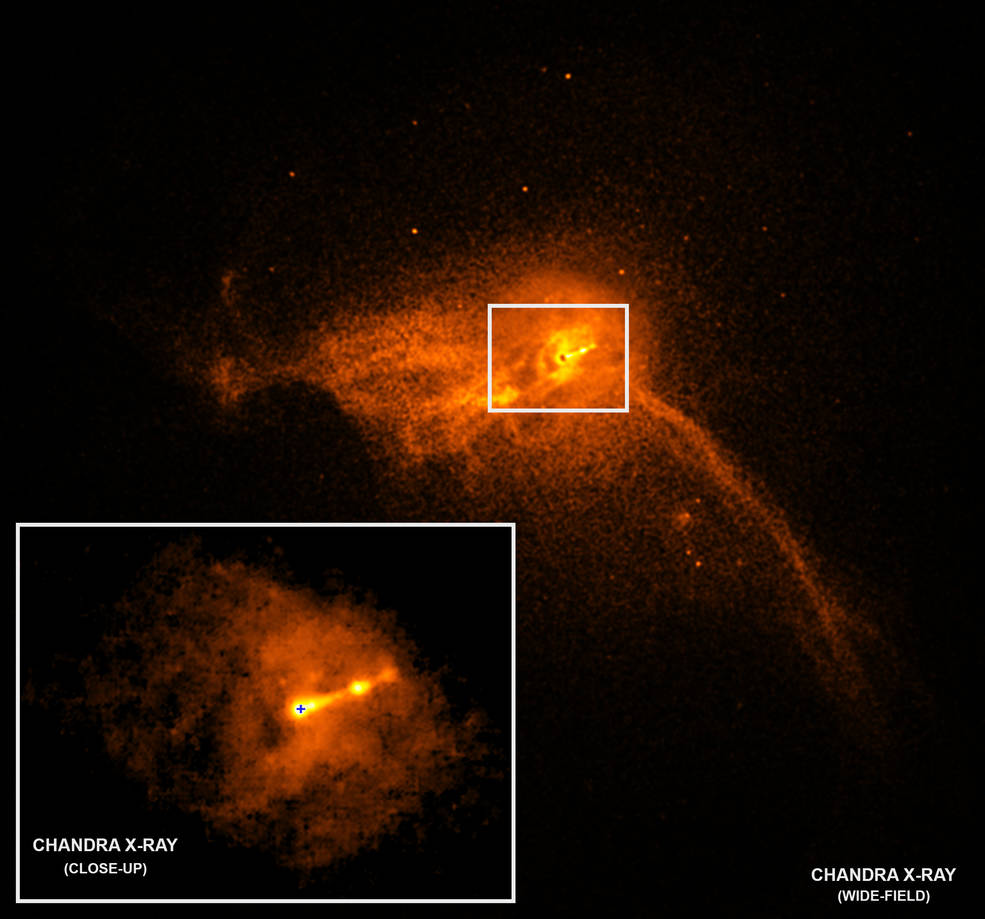
Closeup labeled image of galaxy center
Chandra X-ray Observatory close-up of the core of the M87 galaxy
NASA space telescopes have previously studied a jet extending more than 1,000 light-years away from the center of M87. The jet is made of particles traveling near the speed of light, shooting out at high energies from close to the event horizon. The EHT was designed in part to study the origin of this jet and others like it. A blob of matter in the jet called HST-1, discovered by Hubble astronomers in 1999, has undergone a mysterious cycle of brightening and dimming.
Chandra, NuSTAR, Swift and Fermi, as well as NASA’s Neutron star Interior Composition Explorer (NICER) experiment on the International Space Station, also looked at the black hole at the center of our own Milky Way galaxy, called Sagittarius A*, in coordination with EHT.
Getting so many different telescopes on the ground and in space to all look toward the same celestial object is a huge undertaking in and of itself, scientists emphasize.
“Scheduling all of these coordinated observations was a really hard problem for both the EHT and the Chandra and NuSTAR mission planners,” Neilsen said. “They did really incredible work to get us the data that we have, and we’re exceedingly grateful.”
Neilsen and colleagues who were part of the coordinated observations will be working on dissecting the entire spectrum of light coming from the M87 black hole, all the way from low-energy radio waves to high-energy gamma rays. With so much data from EHT and other telescopes, scientists may have years of discoveries ahead.
Elizabeth Landau
NASA Headquarters, Washington
818-359-3241
elandau@jpl.nasa.gov
Last Updated: April 11, 2019
Editor: Sarah Loff
